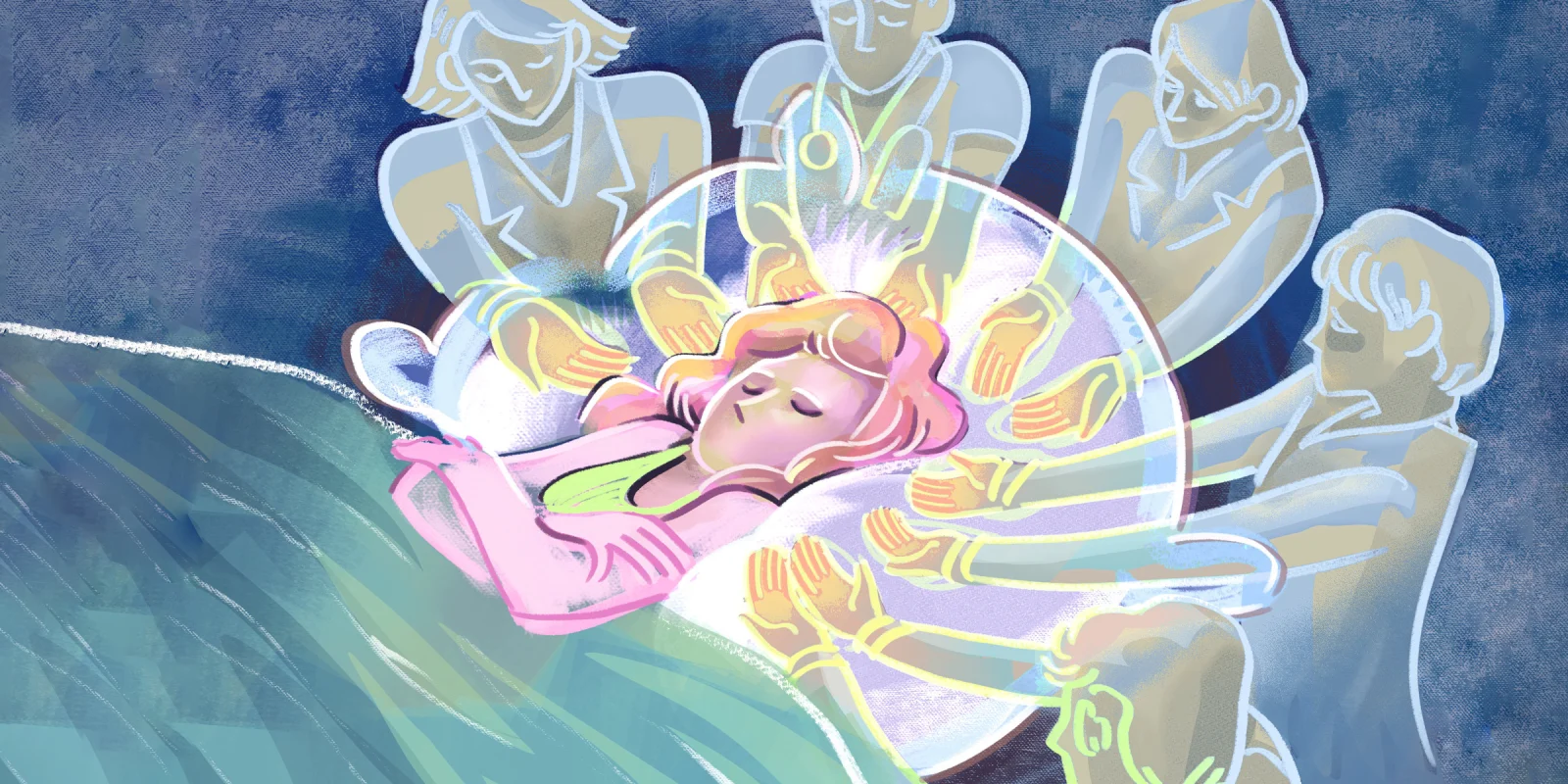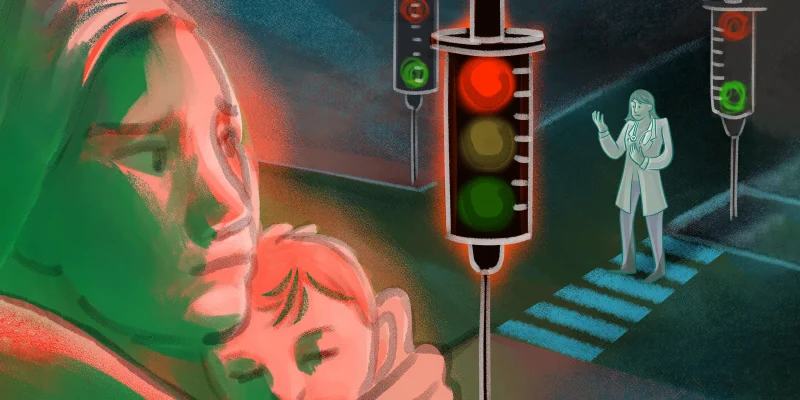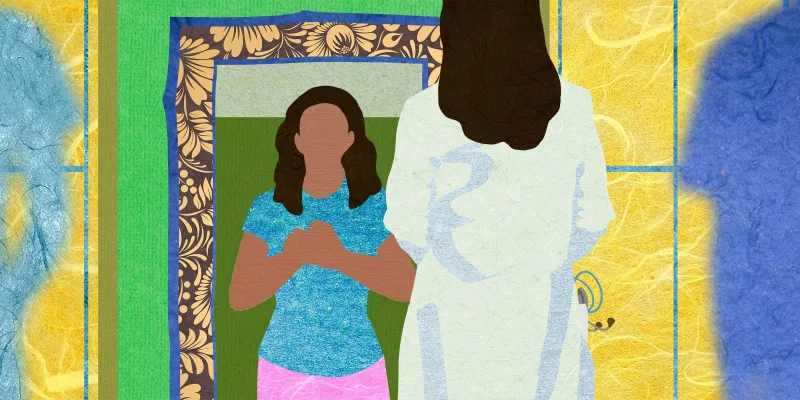When I moved to New York to start surgical residency — now over a year ago — I went to see an Alice Neel exhibit at the Metropolitan Museum of Art. Alice Neel is a 20th century American portrait artist, known to the art world as a militant feminist for her depiction of female nudes through a woman's gaze, but she also brilliantly depicted Americans from all walks of life, one being sickness.
I was most struck by a painting entitled T.B. Harlem, which depicts a young man who looks emaciated and depleted. The man is propped up shirtless in bed with a dirty sheet covering his lower body, and his protuberant abdomen is in sharp contrast to his sunken eyes and sunken left hemithorax — a consequence of the thoracoplasty used to surgically treat his disease and at the time his fate, consumption. He has a crisp-white, cross-shaped bandage that he holds lackadaisically to his chest. He looks dignified, calm, and resigned to his suffering. He feels familiar to me and evokes in me the psychological intensity of sickness and dying that we see so often in the hospital.
Later on, I read more about this painting and learned that it appeared on the cover of JAMA in 2005, so it was clearly compelling to more medically minded people than just me. I also learned that the subject of the painting was the 24-year-old brother of Alice Neel’s lover at the time. Alice painted a series of portraits focusing on people living in Spanish Harlem in the 1930s and 1940s that highlighted poverty and the lives lived in confined spaces with many people, and T.B. Harlem was but one of them.
I have thought a lot about this portrait in my first two years of residency. It represents for me the concept of death and dying and, particularly, death with dignity.
Physicians and other health care workers have a unique relationship with death. If you are in an ICU (where I have been spending much of my time this year), you may experience it on a daily basis. We see people who die “well” and those who suffer. We counsel families to make their loved ones DNR/DNI or comfort care when they are beyond our help, and we readily terminally extubate people, dulling their pain with a hydromorphone drip. They can die quietly surrounded by those who love them, perhaps with their favorite music playing in the room or a family member reading to them out loud from their favorite book, or at least with someone holding their hand. We want so much for our patients to die this way. We will negotiate with spiritual leaders in patients’ communities — I even have the phone numbers of a few rabbis saved in my phone. We will coordinate countless family meetings. We would do anything to give our patients a peaceful death.
Alternatively, we will also intubate and code any and all patients if it is within their and their families' wishes — even the very elderly, those with metastatic cancer or a terminal illness, and so forth. I and so many others have seen patients' last moments filled with aspirated vomit and blood as we push epinephrine and bicarbonate into their veins. We have felt sternums snapping violently under our hands during CPR — CPR we all knew was futile. We have seen patients die alone or with their families in a waiting area while we do this so-called “everything we can.” We may feel like we are doing harm, but we also know the importance of patients and their families having autonomy over how they die, even if we don’t agree with it.
I wonder if death with dignity should be restated as death with dignity, which is in the eye of the beholder. For me, there is no less dignified way to die in an ICU than under the hands of someone performing CPR, but I justify this action with the thought that the family wants to feel like we — as a medical team — did everything we could. And we do, and we will.
Every patient we take care of is so much more than their death — they had a whole lifetime of loving and living before they came to us, but often we only see our patients as sick, dying, or at the end of their lives. The young man in T.B. Harlem holds for me the suffering, calm resignation, dignity, and bodily mutilation we see in death and dying every day. I see in his hollowed eyes the hollowed eyes of a young woman who had ovarian cancer metastases all throughout her lungs. We wedged them out piece by piece, but I found out she still died much later on (I found her obituary). I see in his swollen belly the swollen belly of a patient intubated and sedated in the ICU awaiting a liver transplant (I’m not sure if he ever got it). I see so much familiarity with so many patients I have seen and treated, surgically or not. The painting may make some feel uncomfortable or struck with the sadness of being ill, but for me, it is a visual reminder of the patients I take care of every day at the beginning, middle, or end of their lives.
What art — be it a painting, song, etc. — reflects what you experience when caring for patients? Share in the comments.
Caitlin J. Cain is a second-year surgical resident at New York Presbyterian/Weill-Cornell Medical Center. She is an aspiring pediatric surgeon and is interested in medical humanities as a means for enhancing clinical practice, and is a 2022–2023 Op-Med Fellow. Follow her on twitter @joelle_caitlin.
Illustration by April Brust







